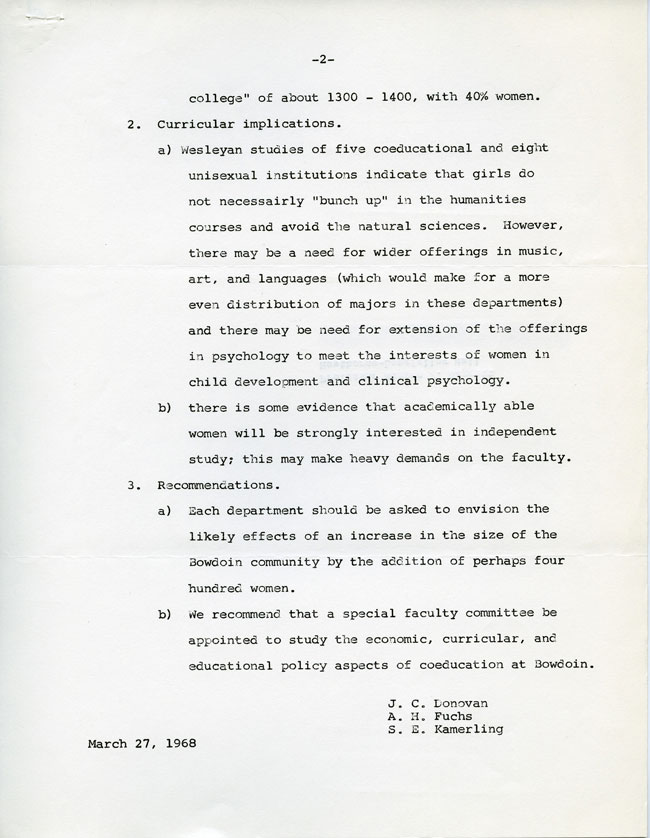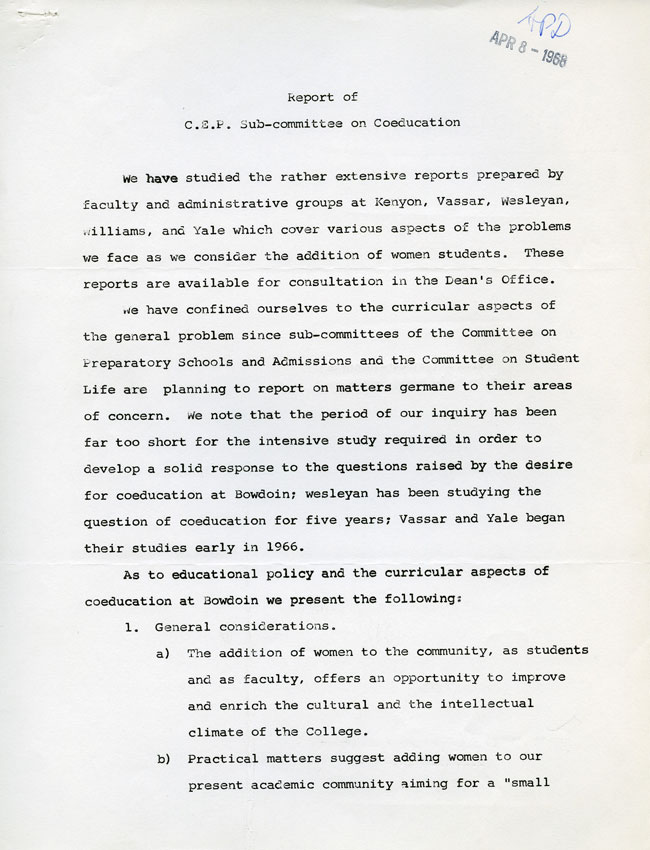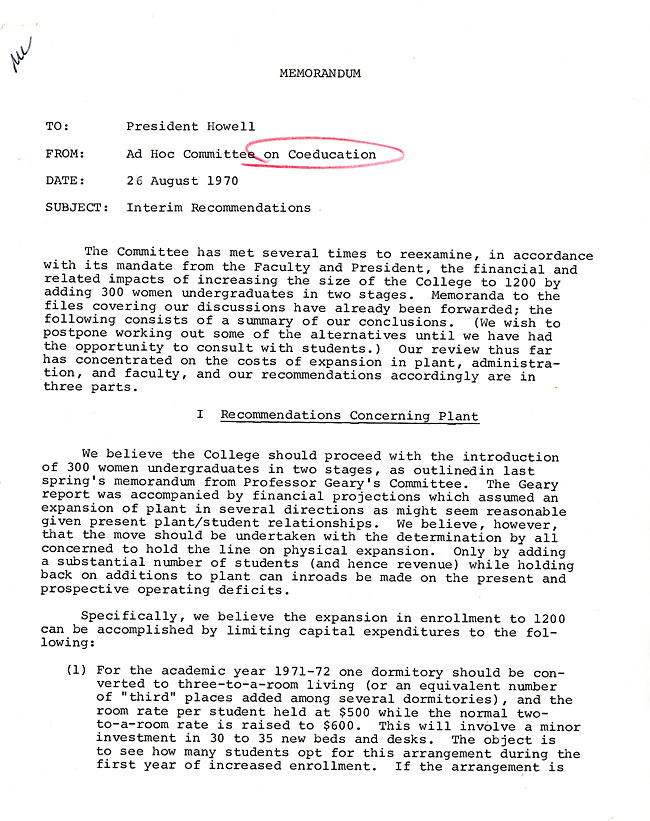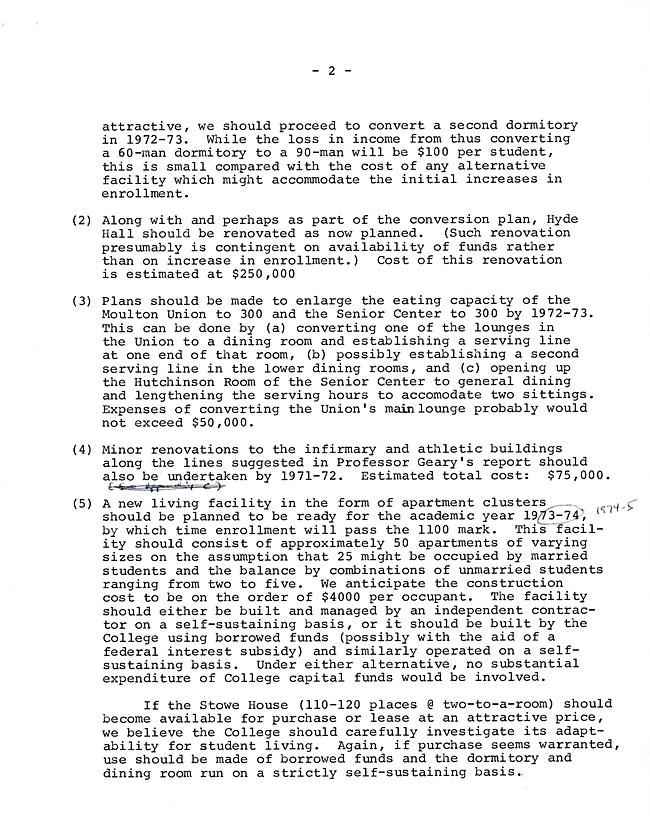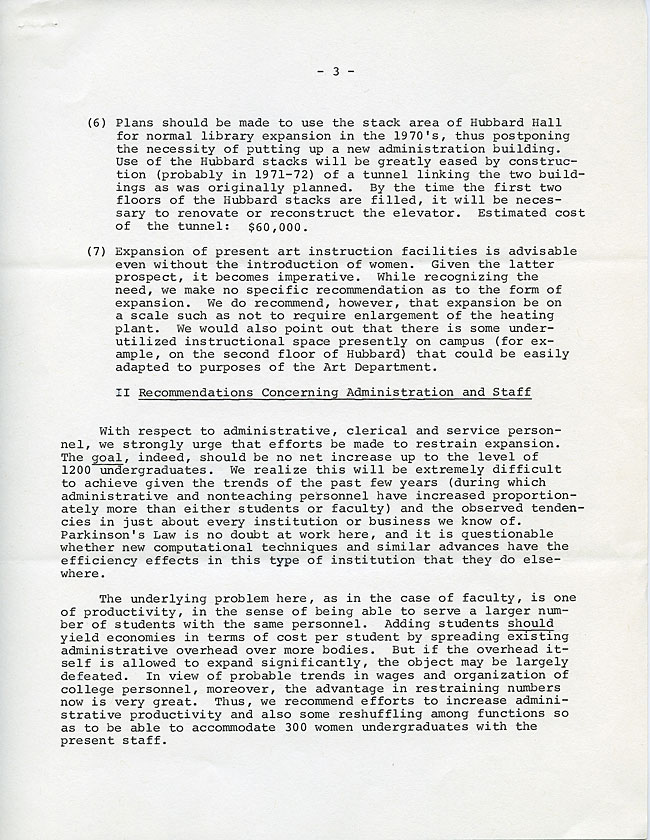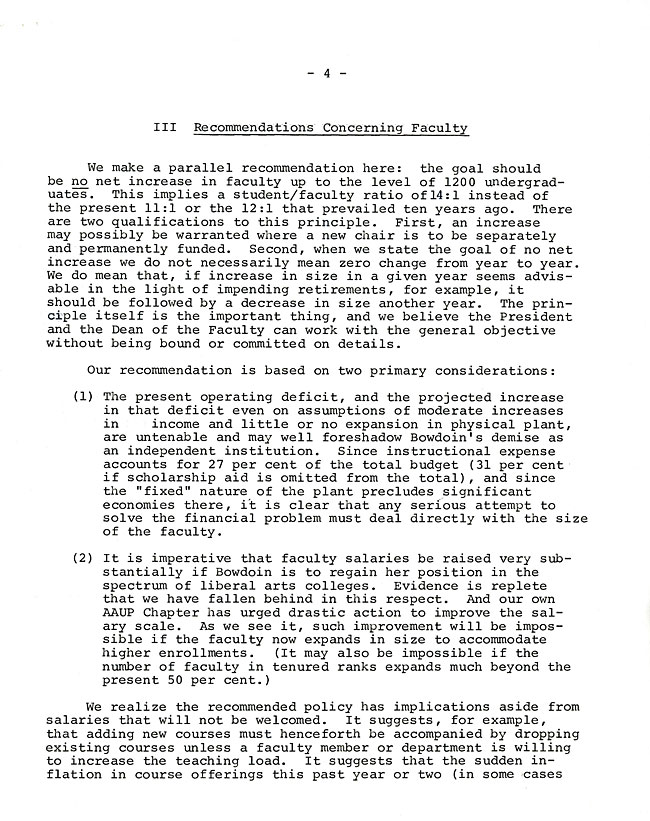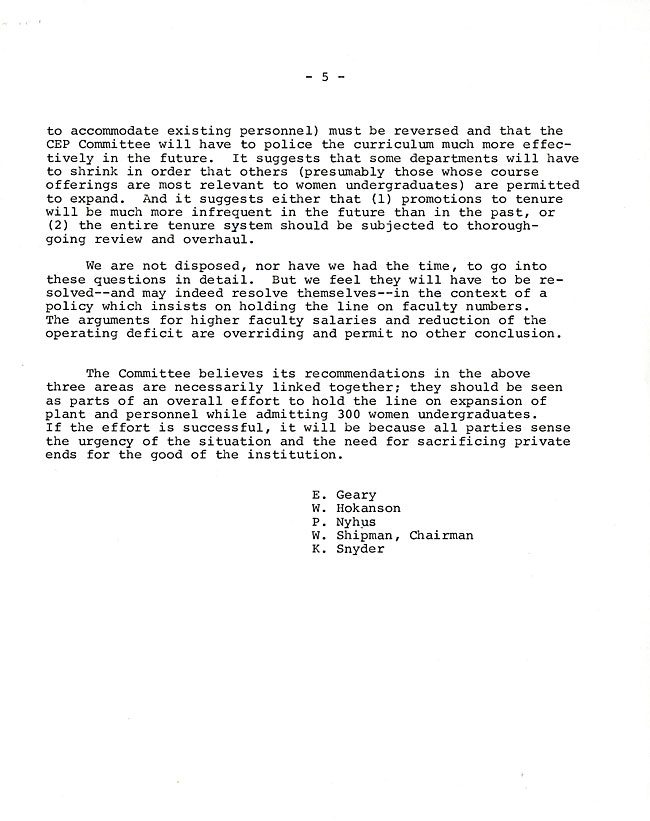During the late 1960s and early 1970s, many single-sex colleges across the country began to consider transitioning into coeducational institutions. In 1969, Bowdoin became one of twelve colleges to participate in a Twelve College Exchange program that allowed male and female students to spend a semester to a full year studying at a college from which their sex had previously been excluded. Through the exchange program, the colleges involved hoped to learn more about the changes that would occur and the new facilities and/or provisions that would be necessary for the admission of predominantly female students, but in general, students of the opposite sex. Bowdoin considered and evaluated the many modifications required as a result of women’s potential admission by forming various sub-committees within, for example, the Committee on Preparatory Schools and Admissions, the Committee on Student life, and notably, within the Curriculum and Education Policy Committee (C.E.P.).
The report presented here (Document, SW, 31) is from the C.E.P. subcommittee on Coeducation. It addresses the general and specific curricular implications the entrance of women to Bowdoin could have based on the subcommittee’s reviews of “extensive reports prepared by the faculty and administrative groups at Kenyon, Vassar, Wesleyan, Williams, and Yale,” institutions that were all coeducational by 1970 and some of whom were members of the College Exchange.
According to this report, the C.E.P. subcommittee on Coeducation favored the admission of women to Bowdoin, asserting that women, “as students and as faculty” would “improve and enrich the cultural and intellectual climate of the College.” With regards to curricular implications, the subcommittee claims that, despite the finding that “girls do not necessarily ‘bunch up’ in the humanities courses and avoid the natural sciences,” it still might be necessary to give “wider offerings in music, art, and languages” and provide an “extension of the offerings in psychology to meet the interests of women in child development and clinical psychology.” In addition, they state that greater demands may be made on the faculty based on the evidence that “academically able women” are often very interested in independent study
